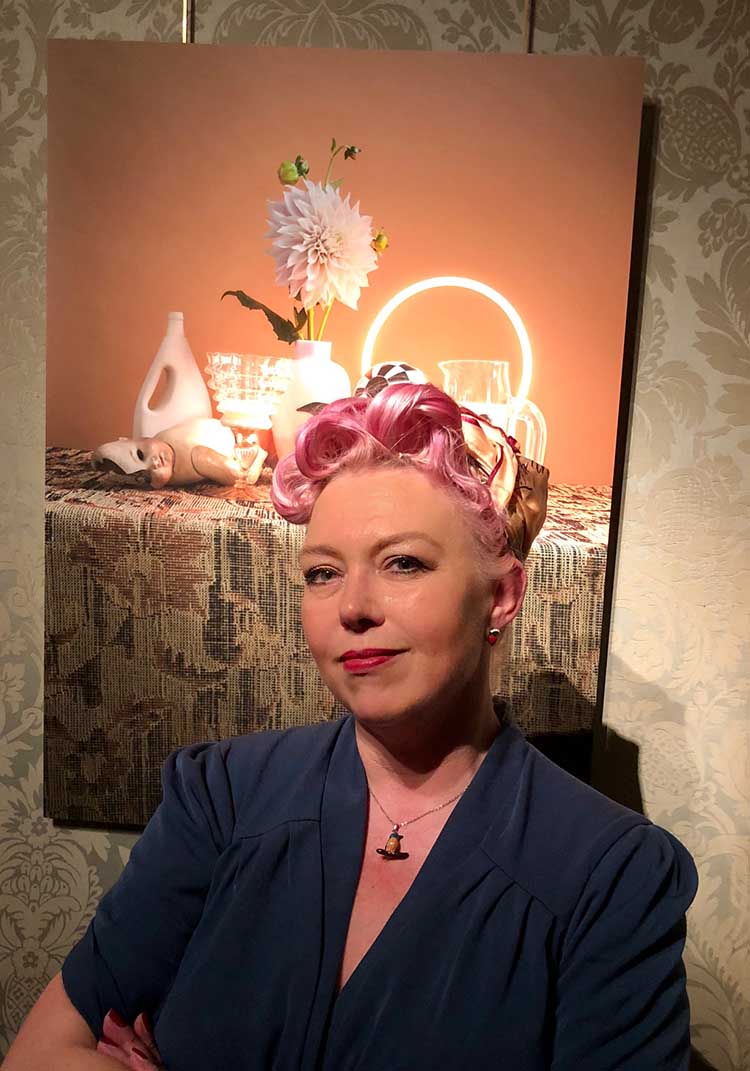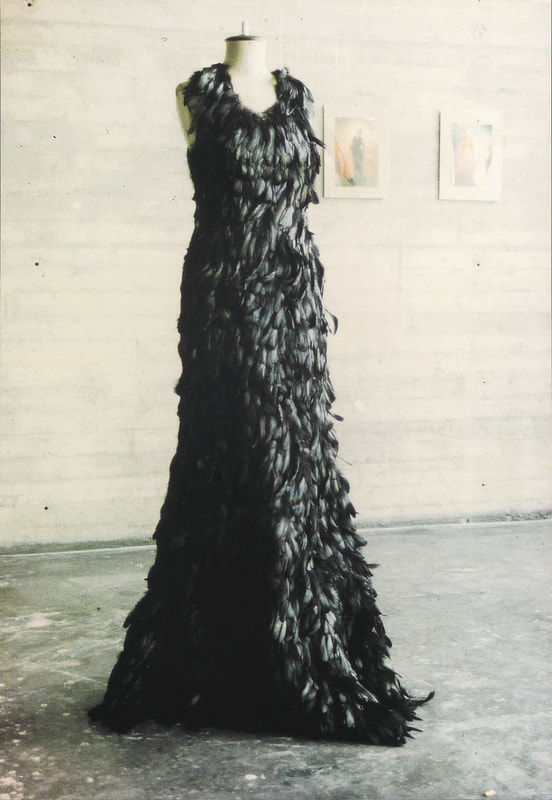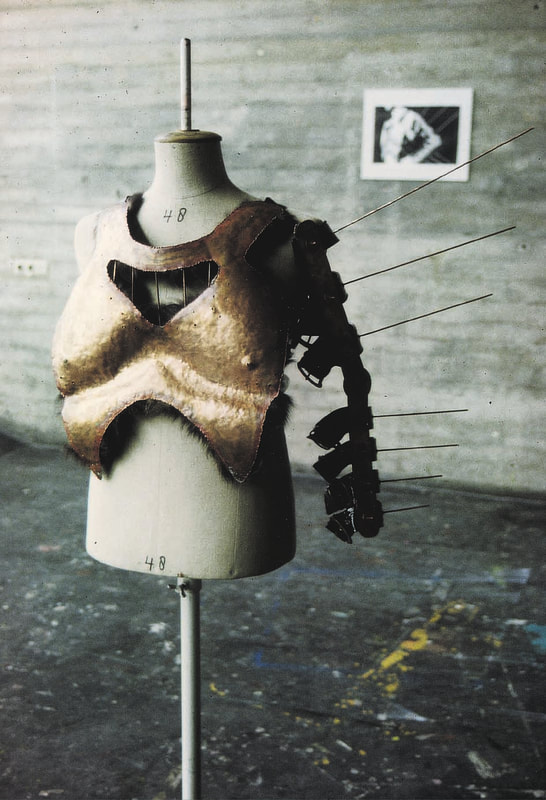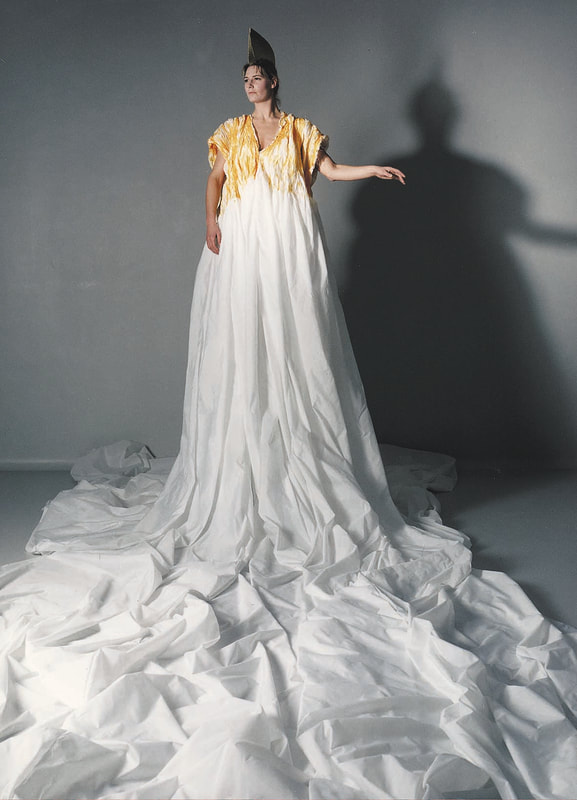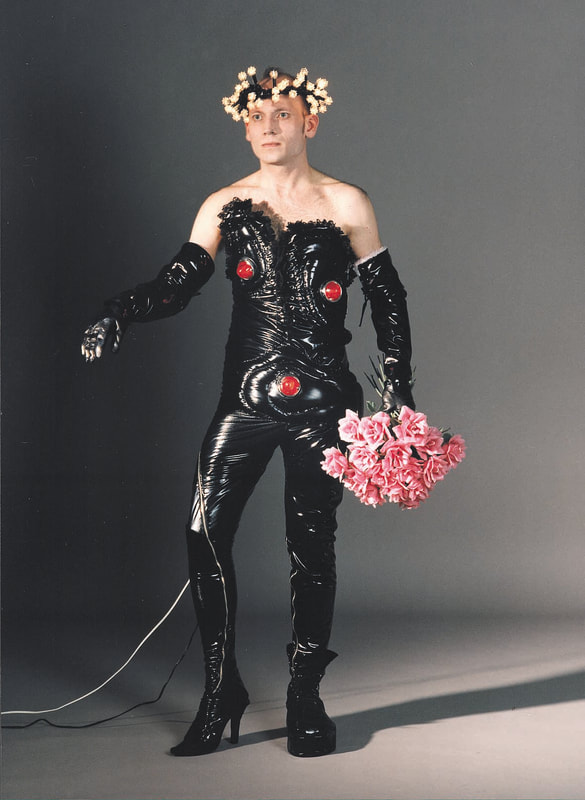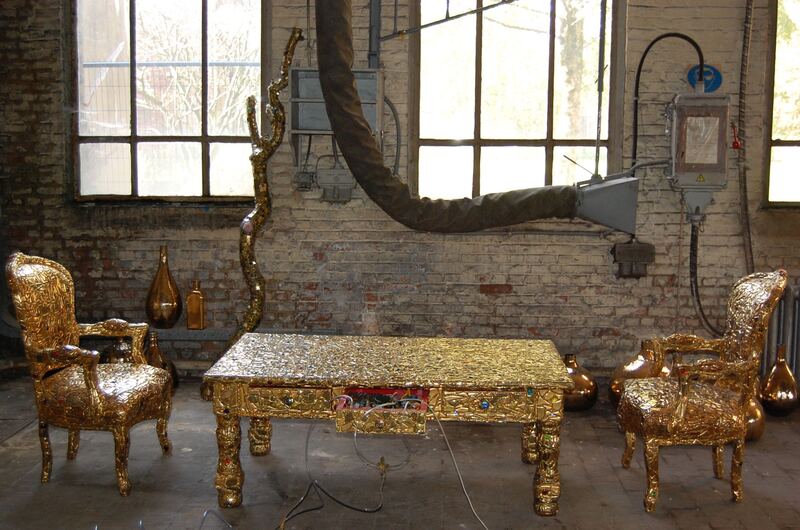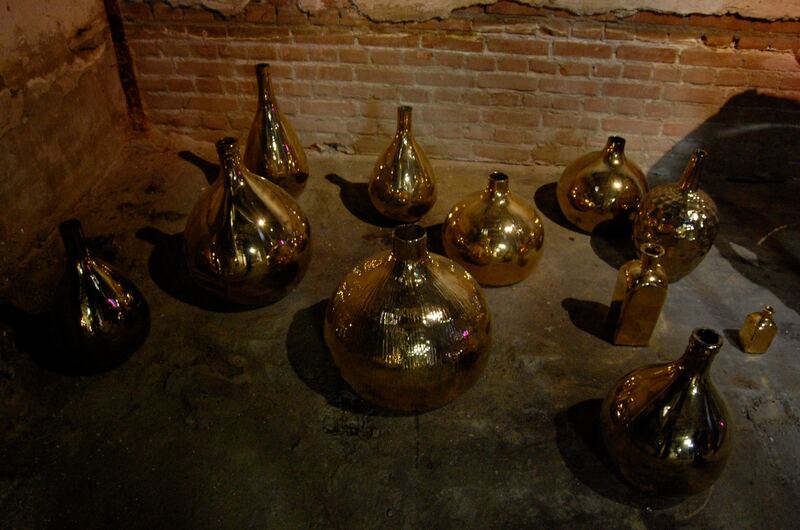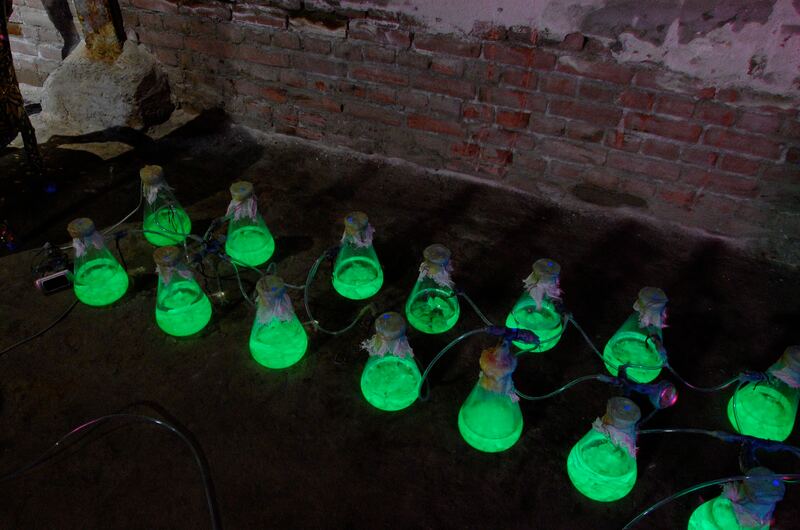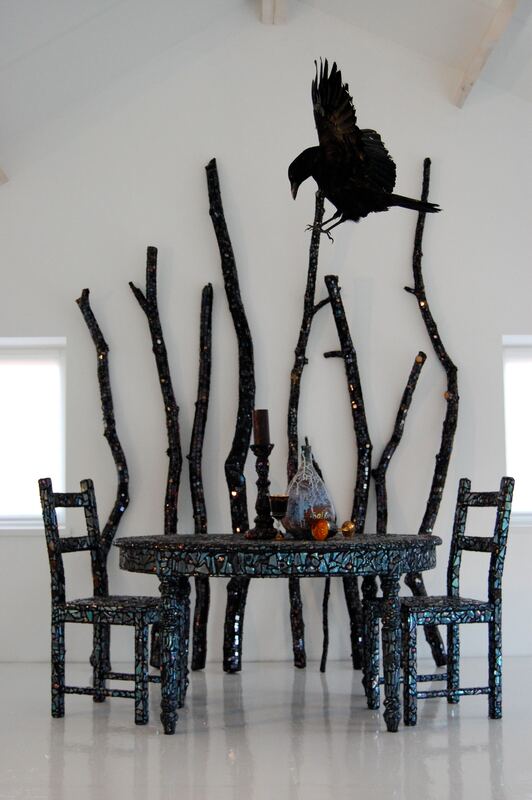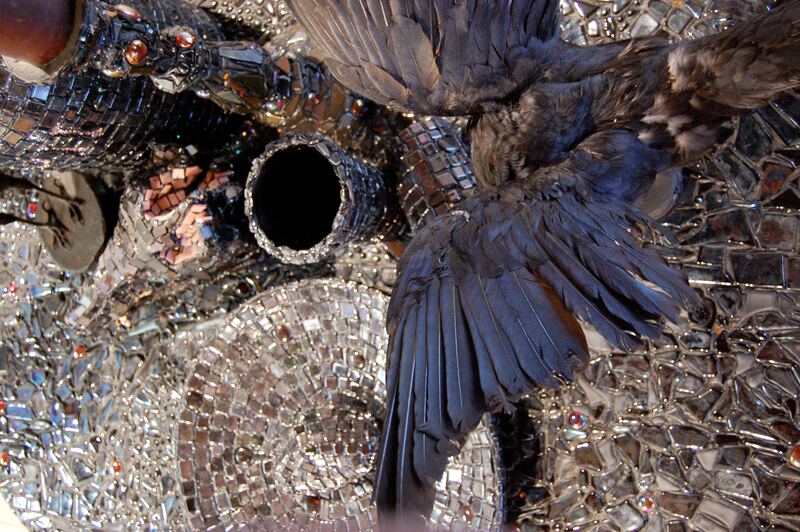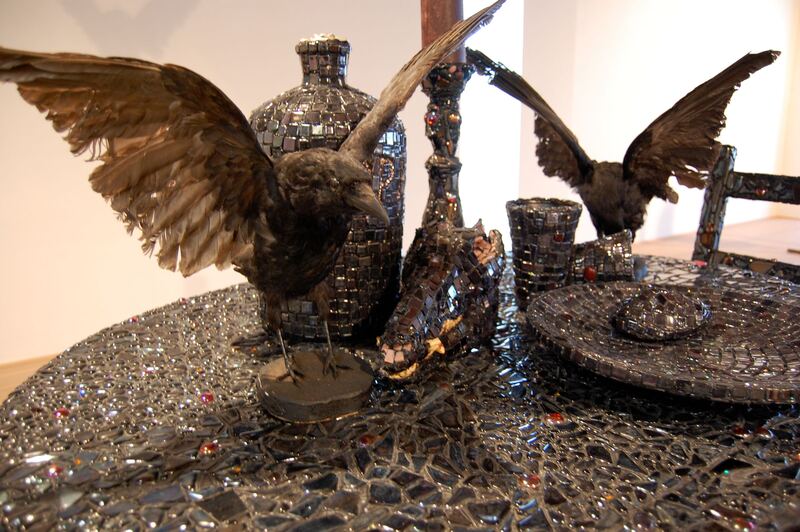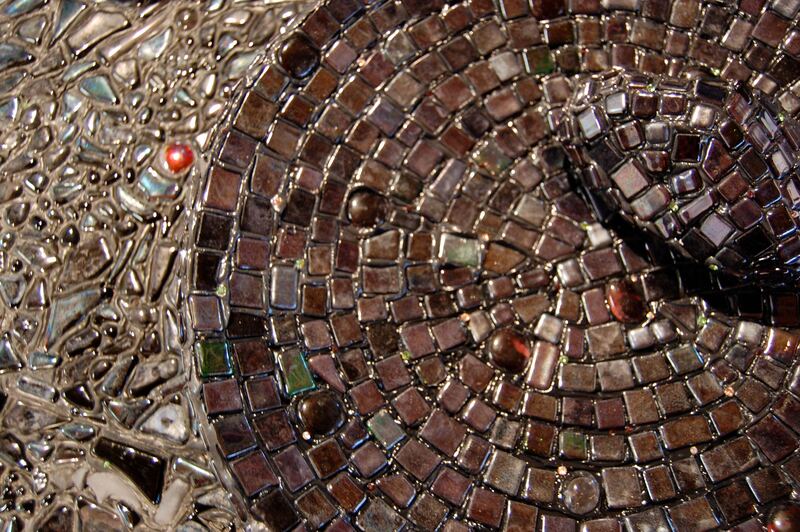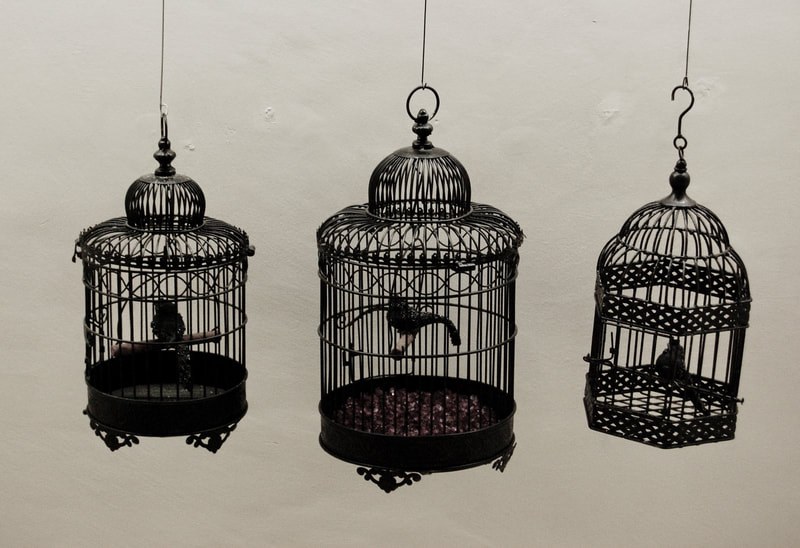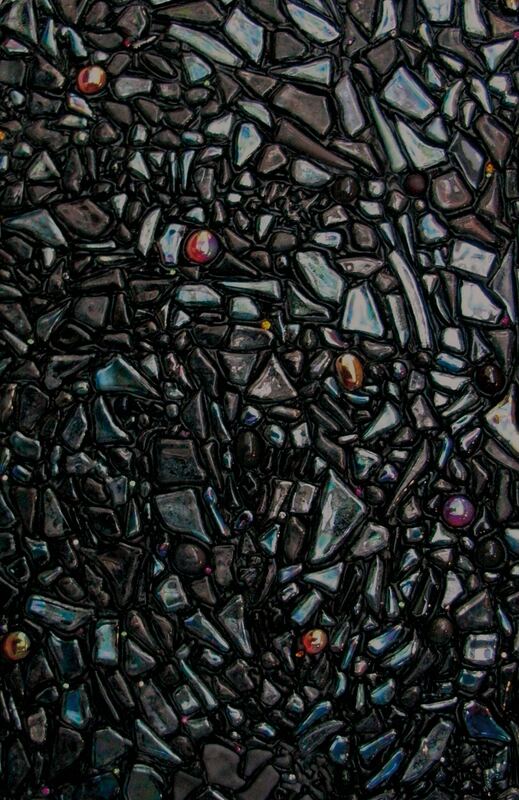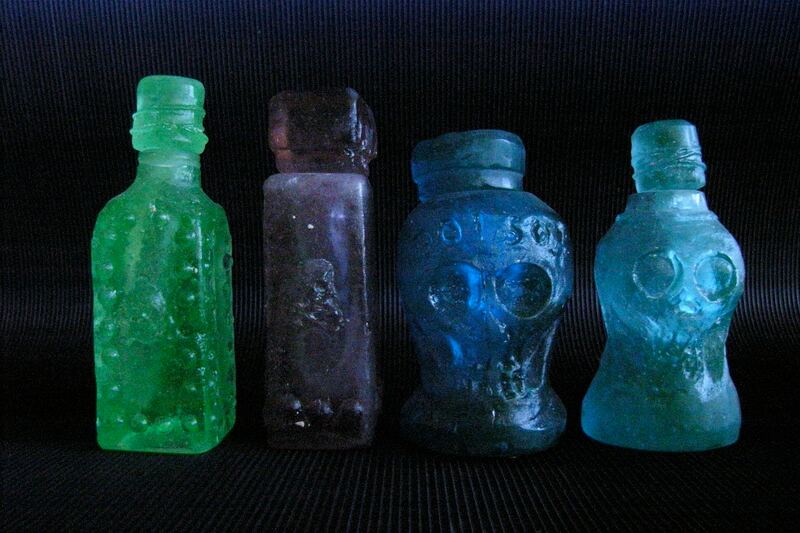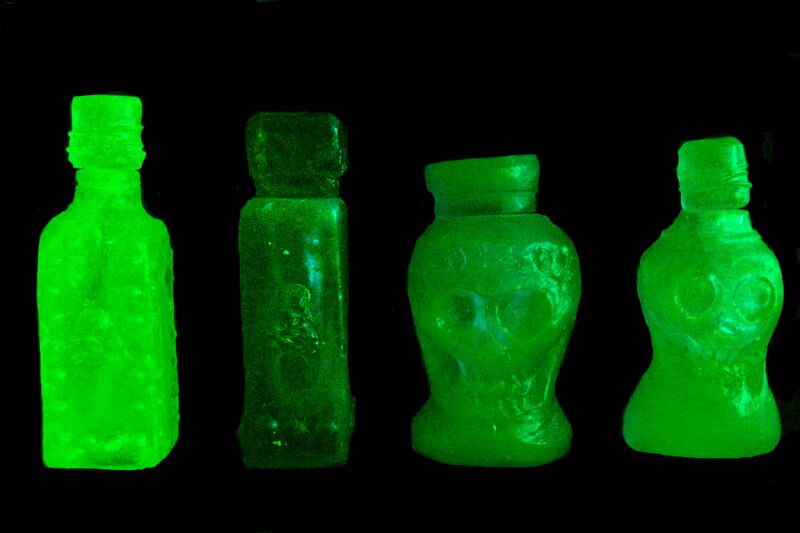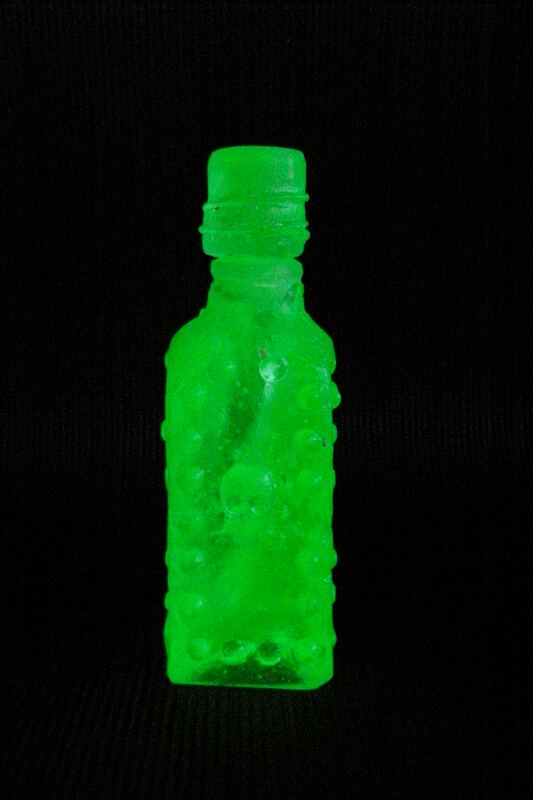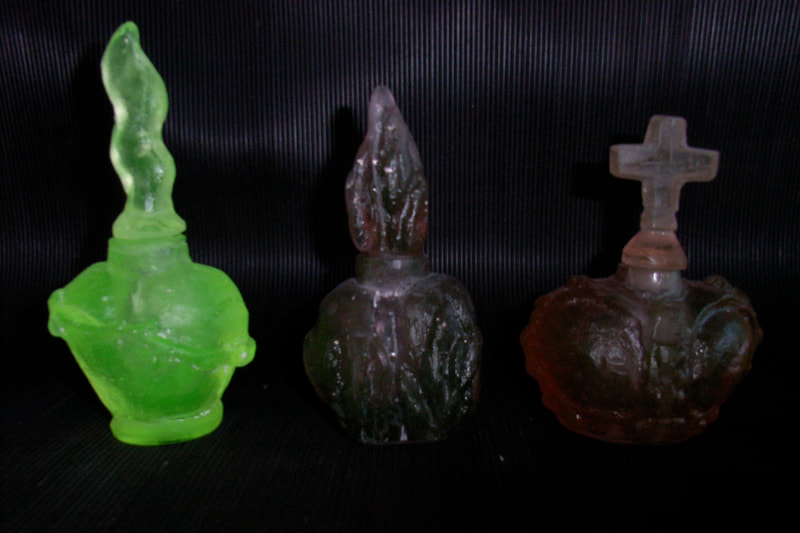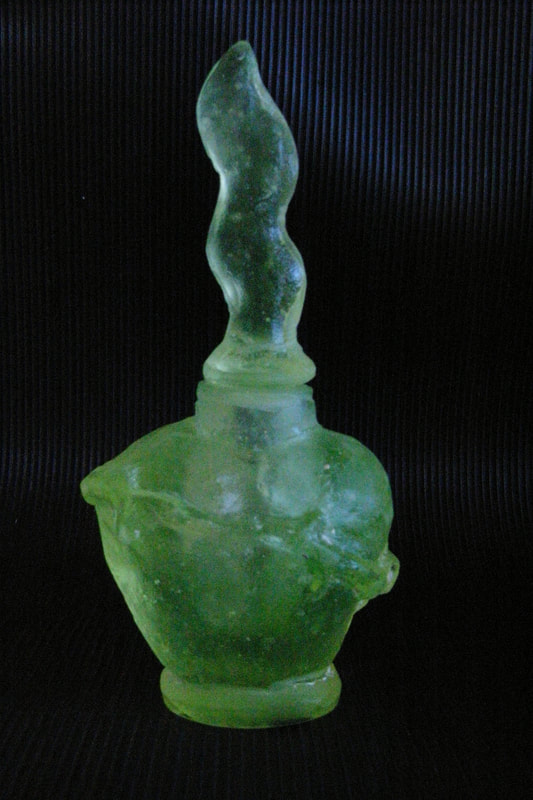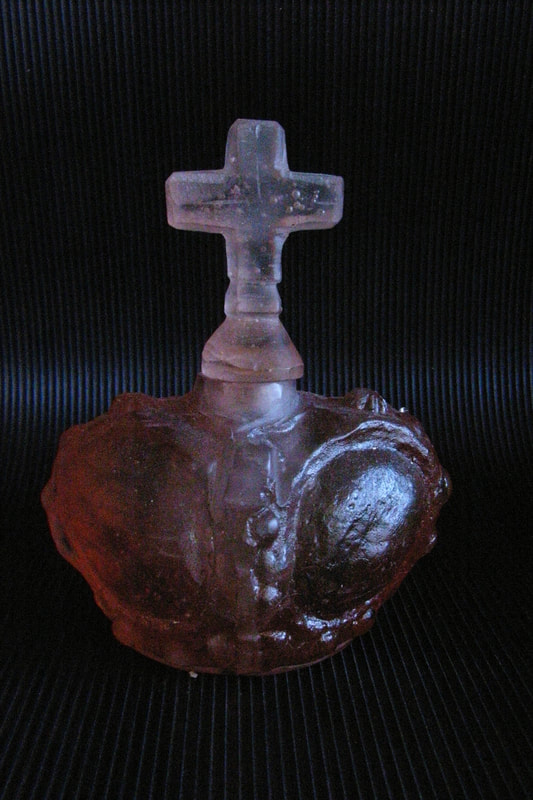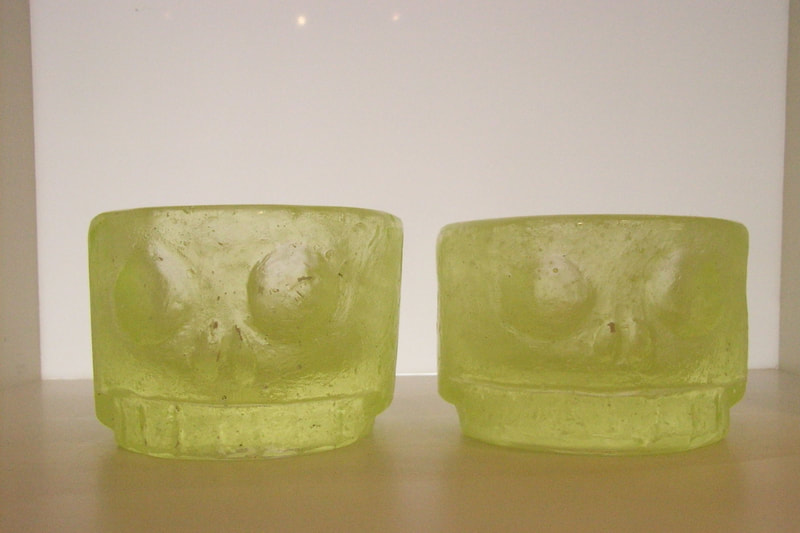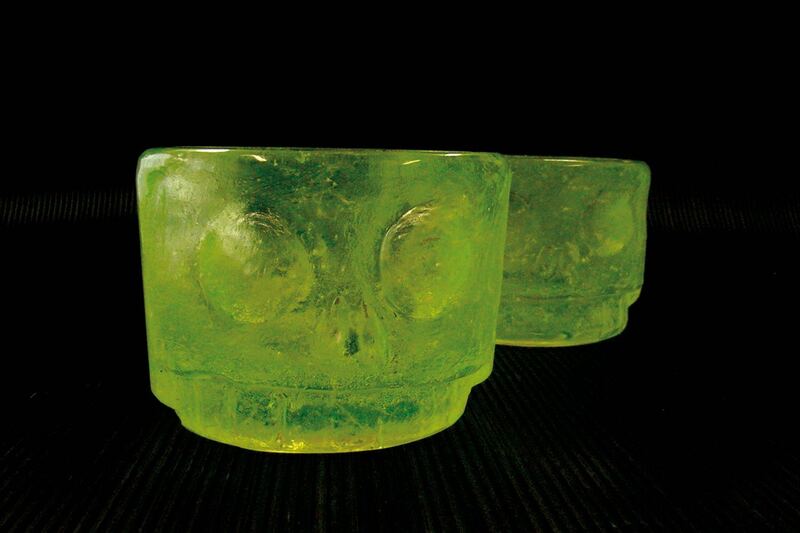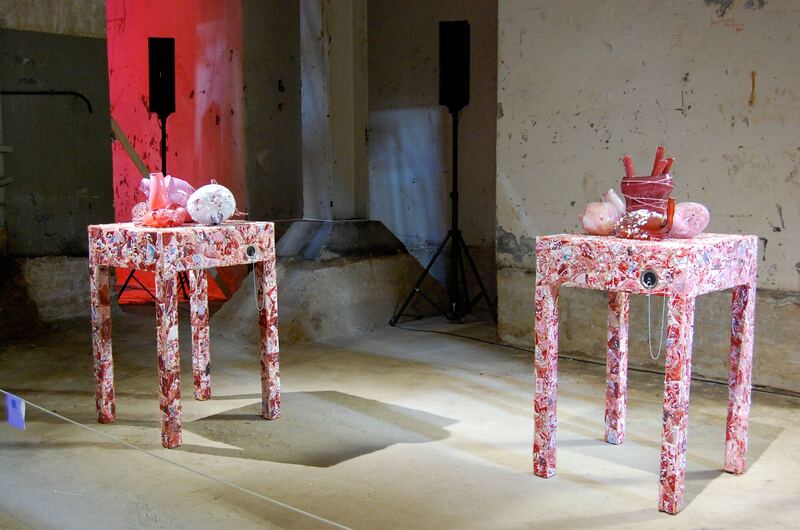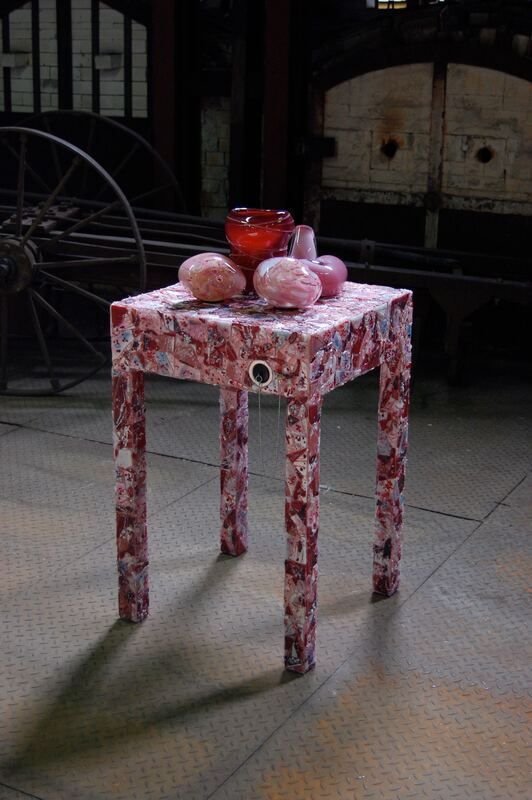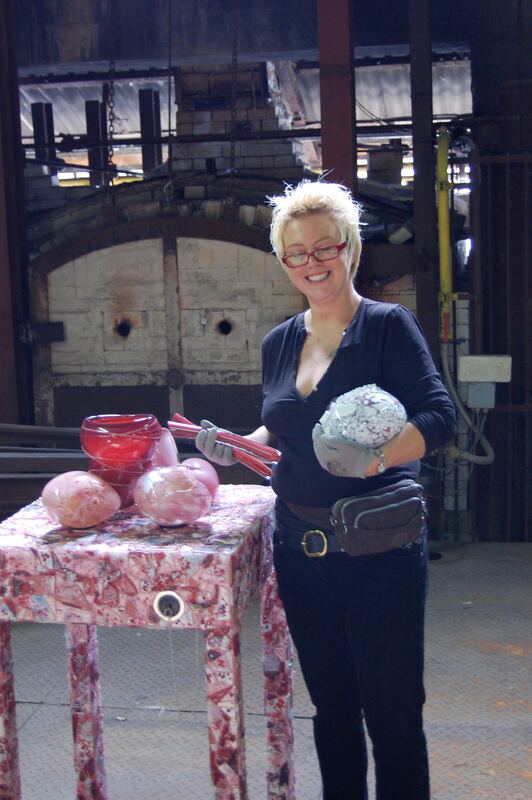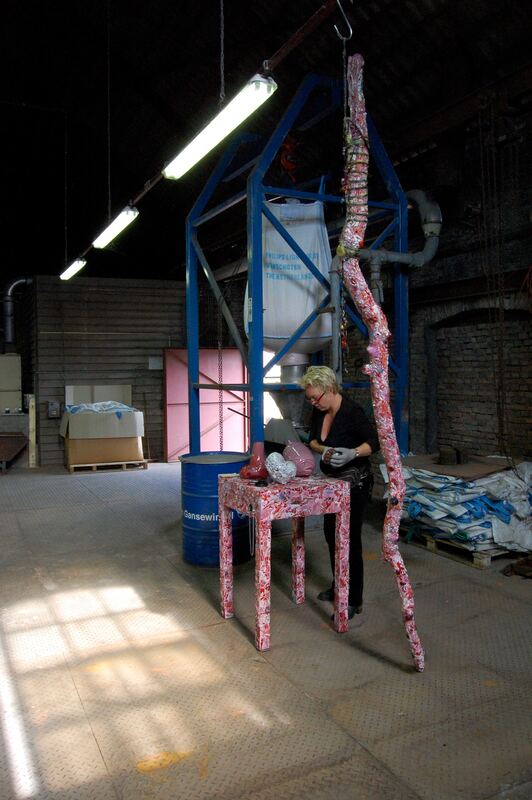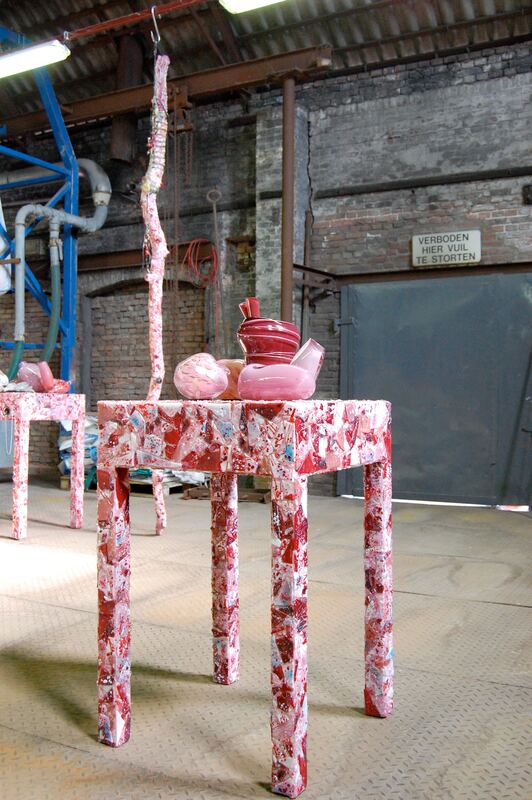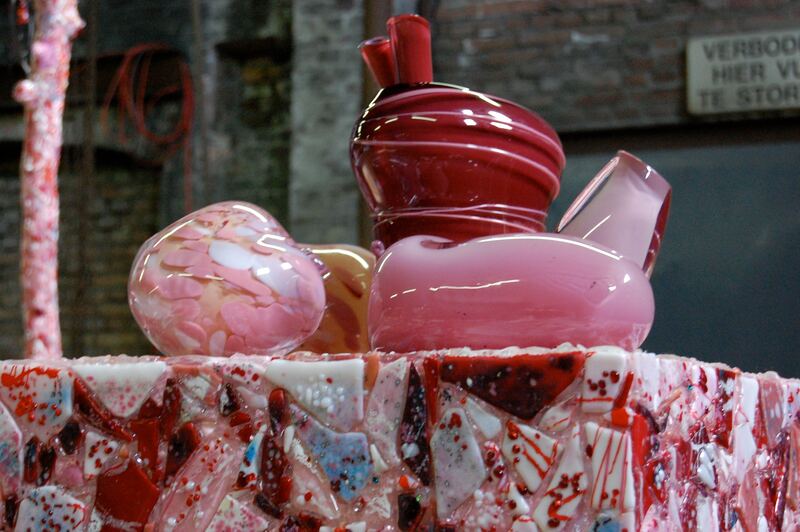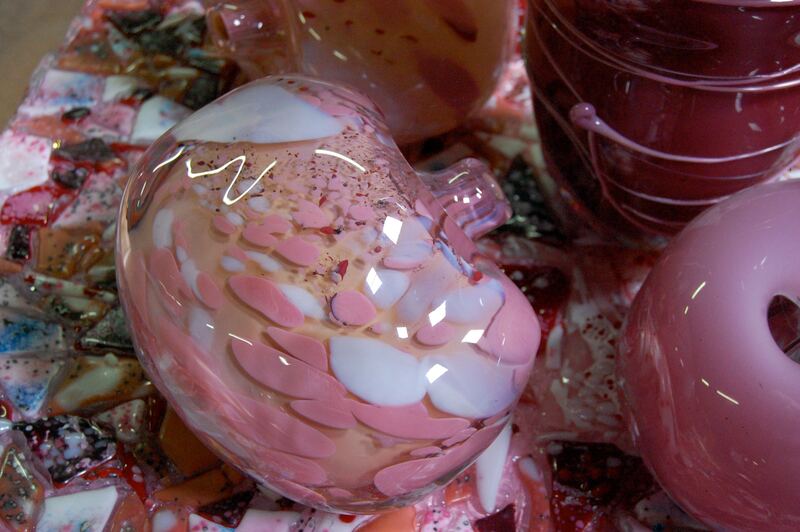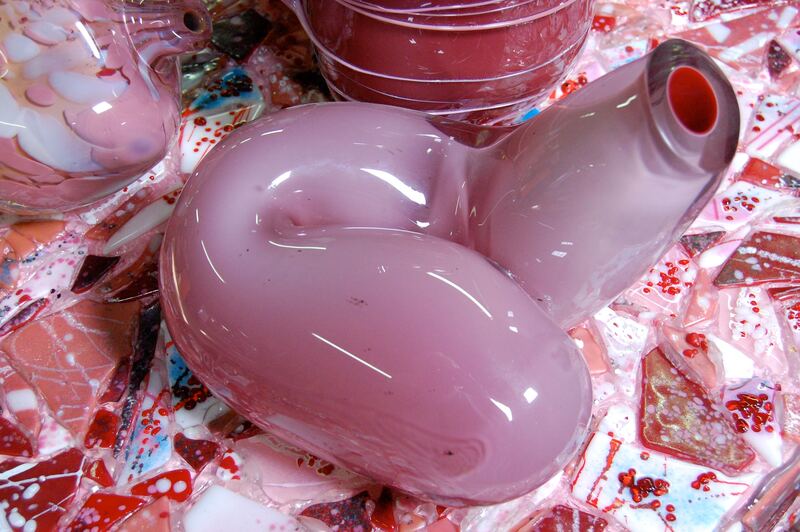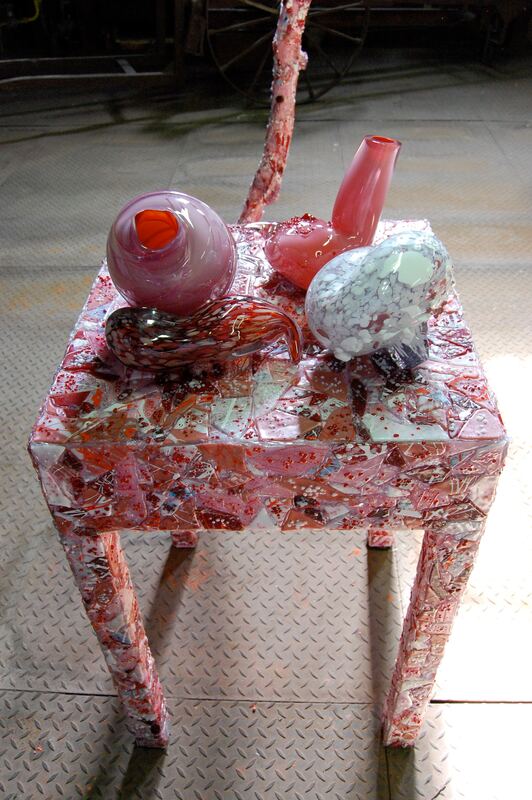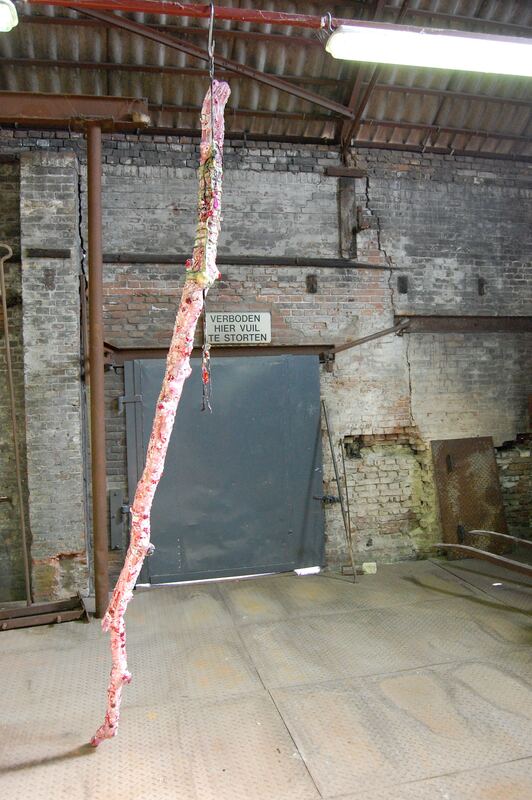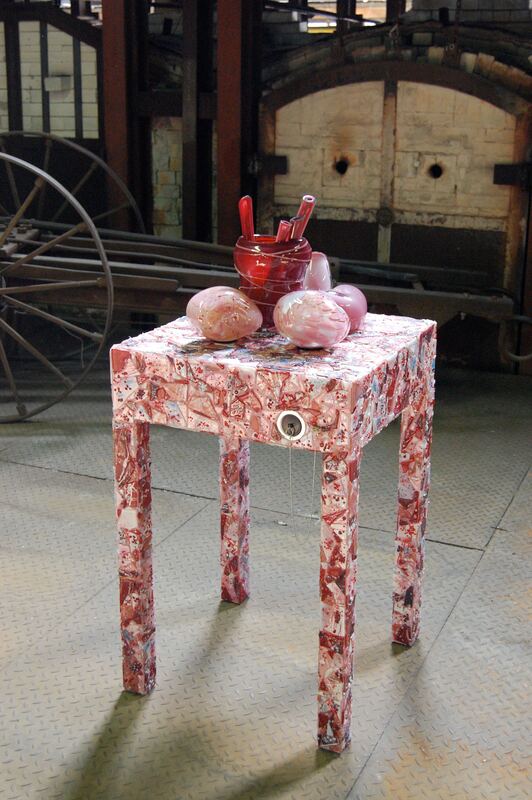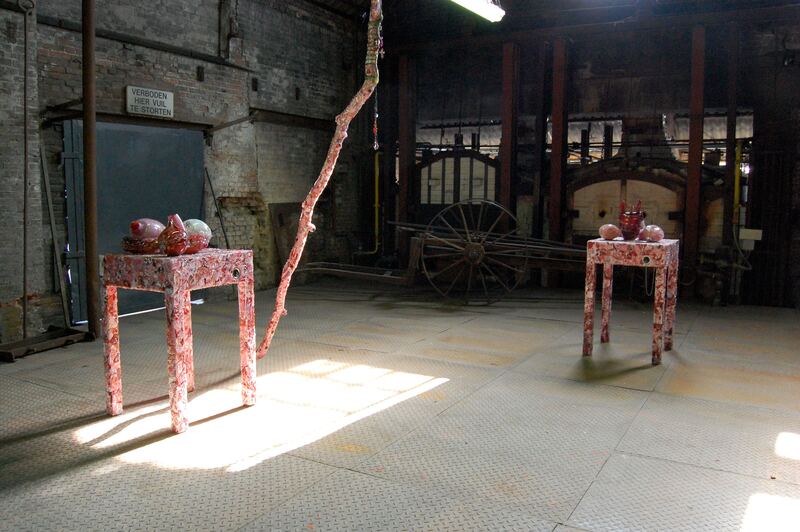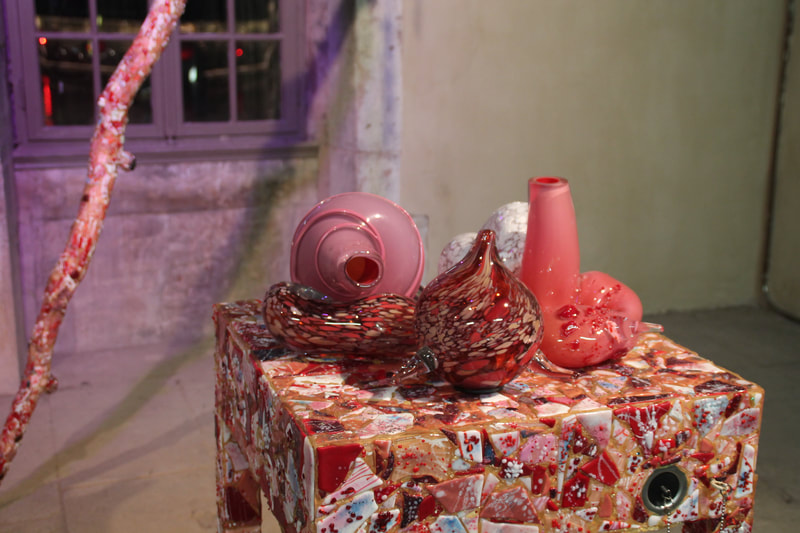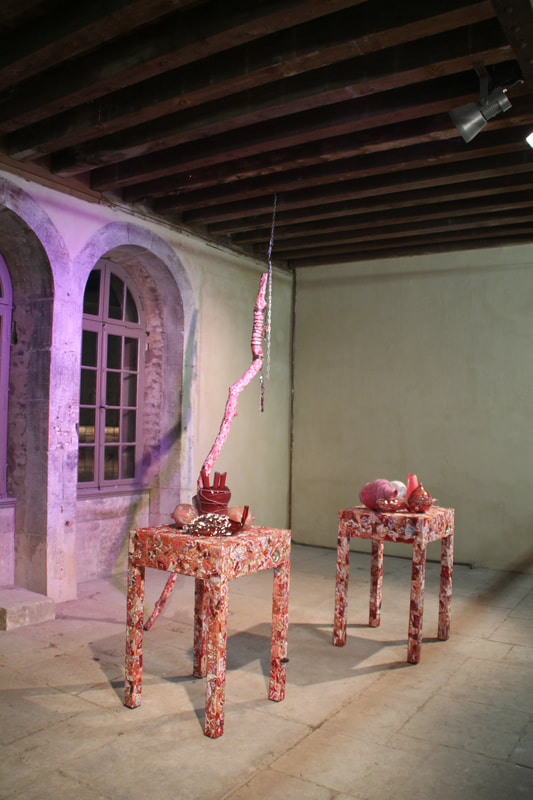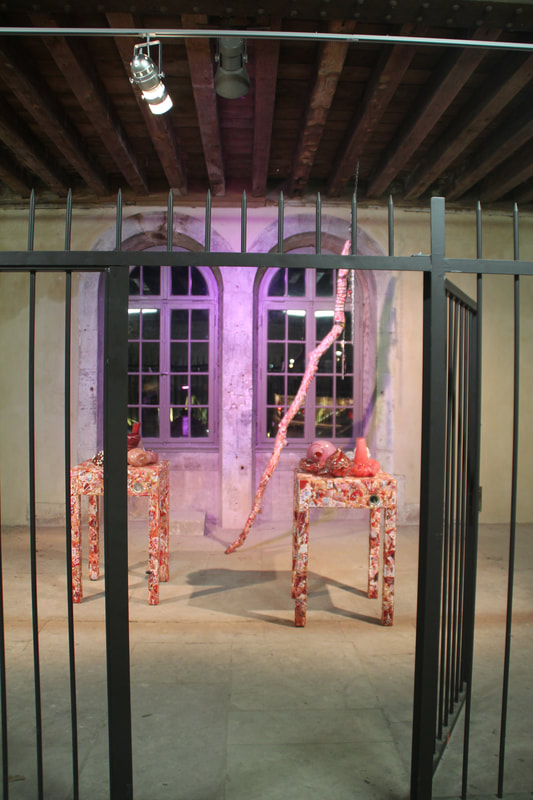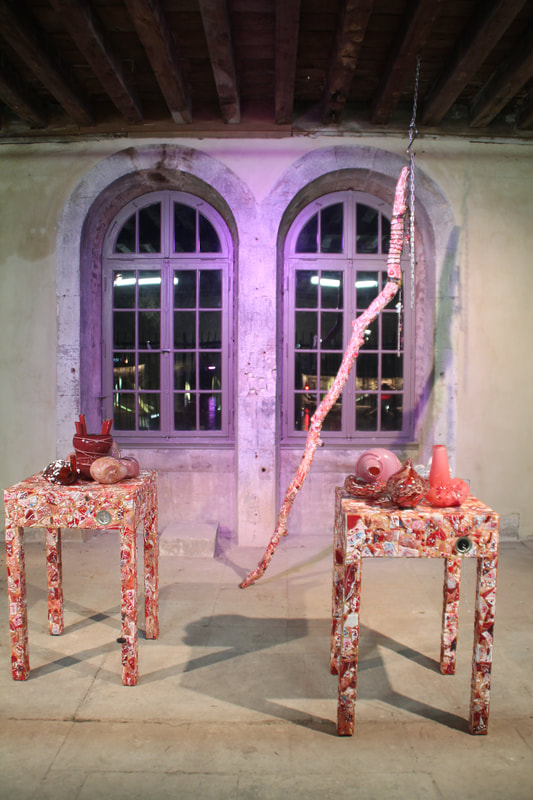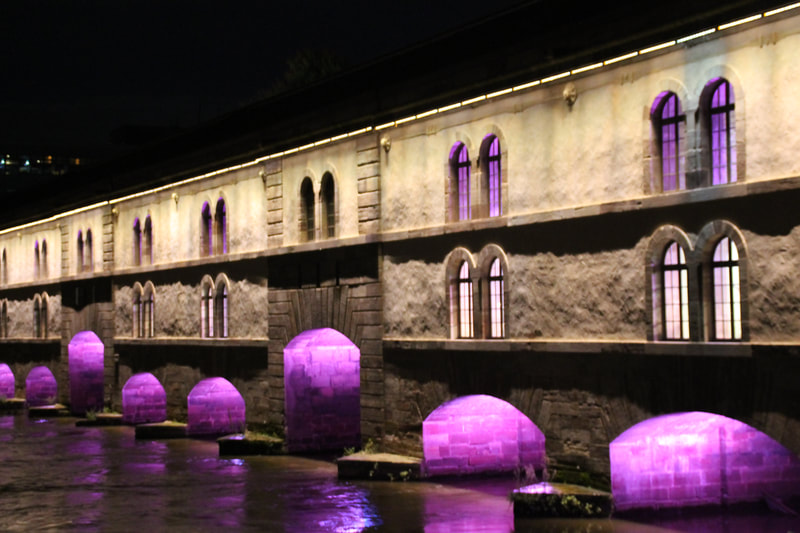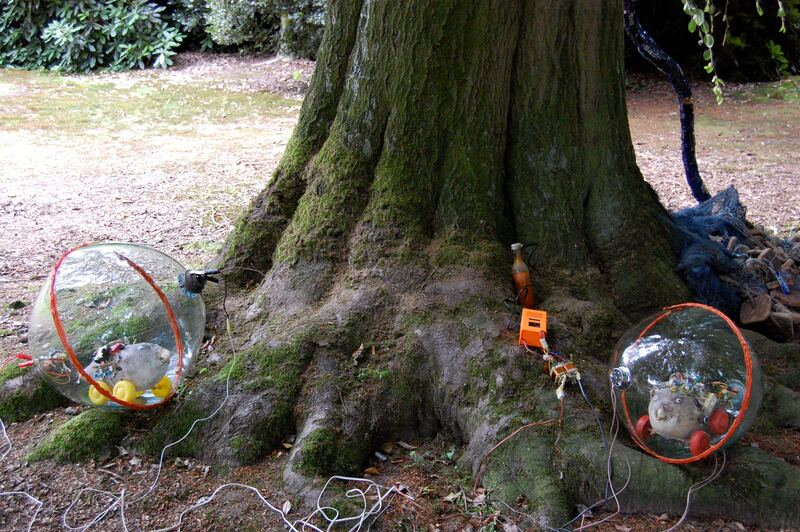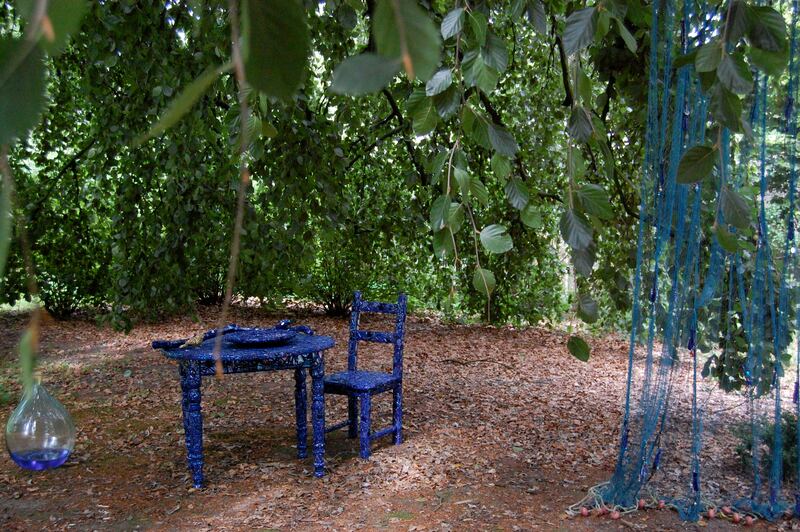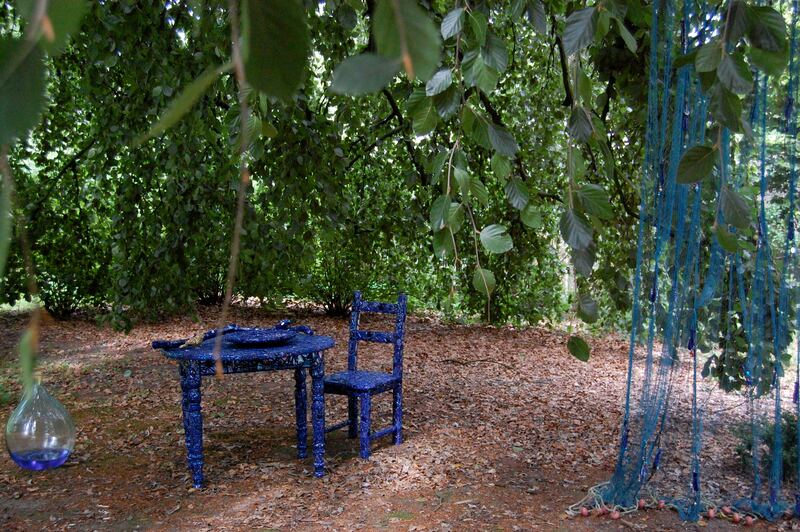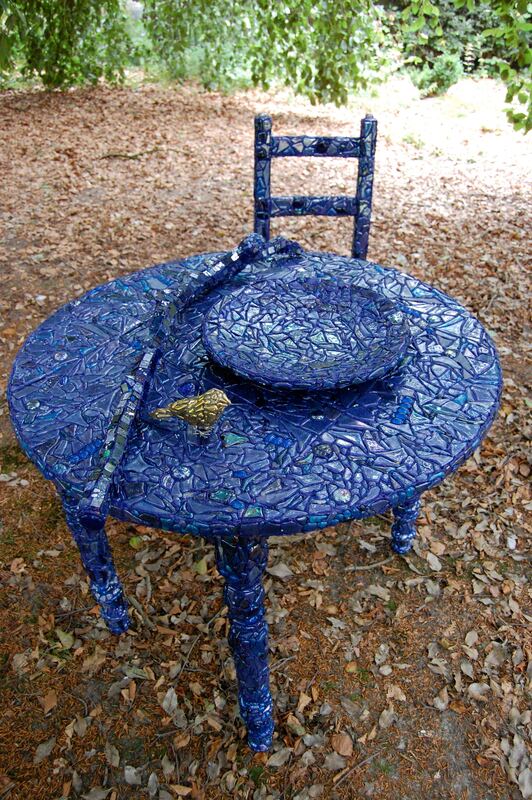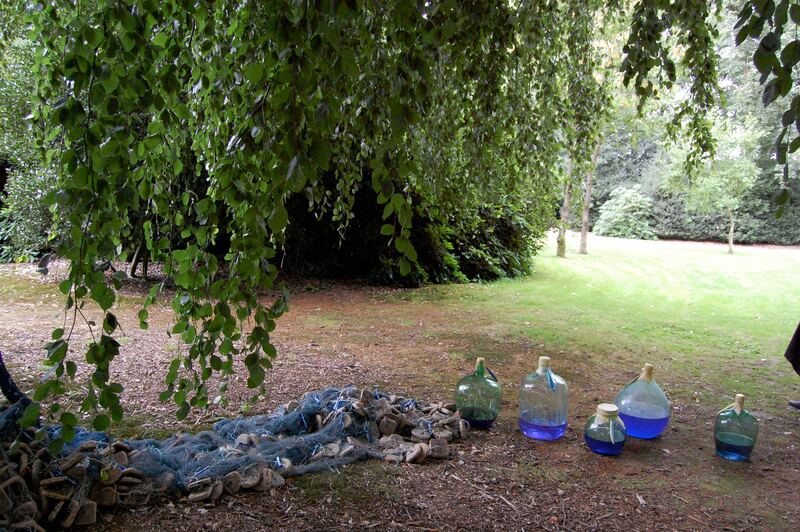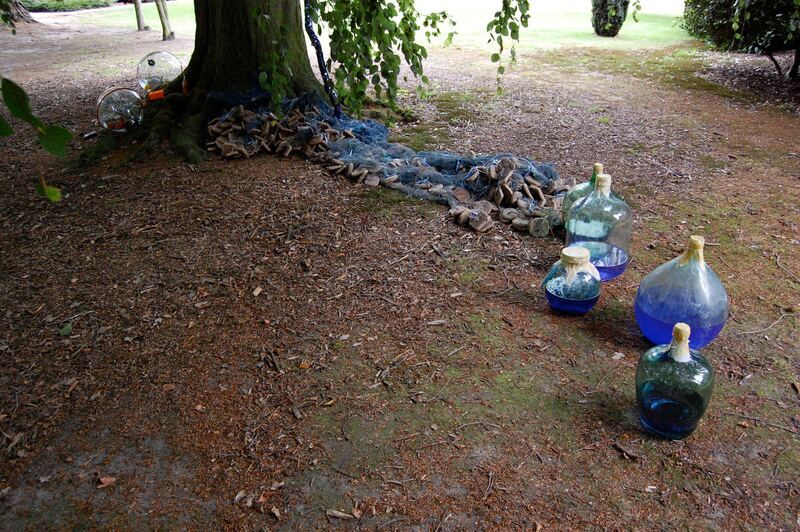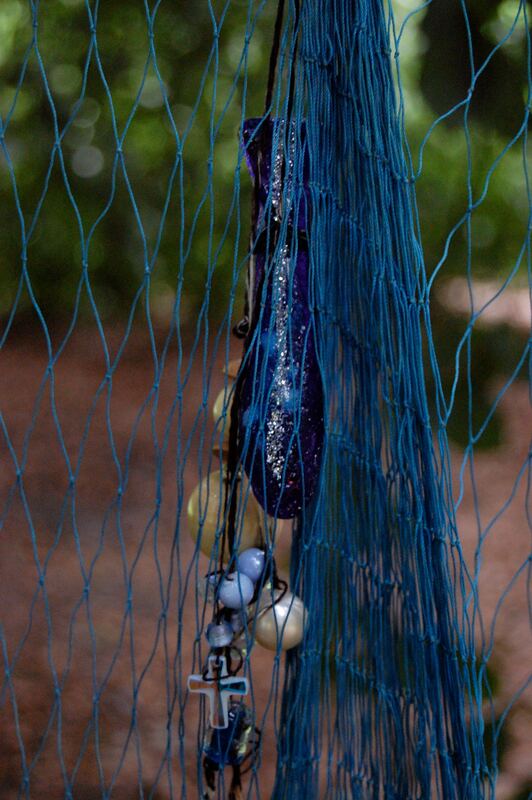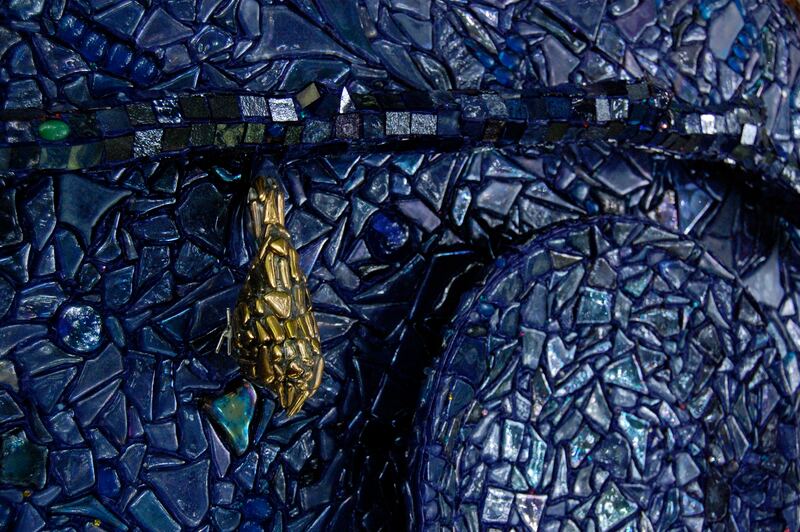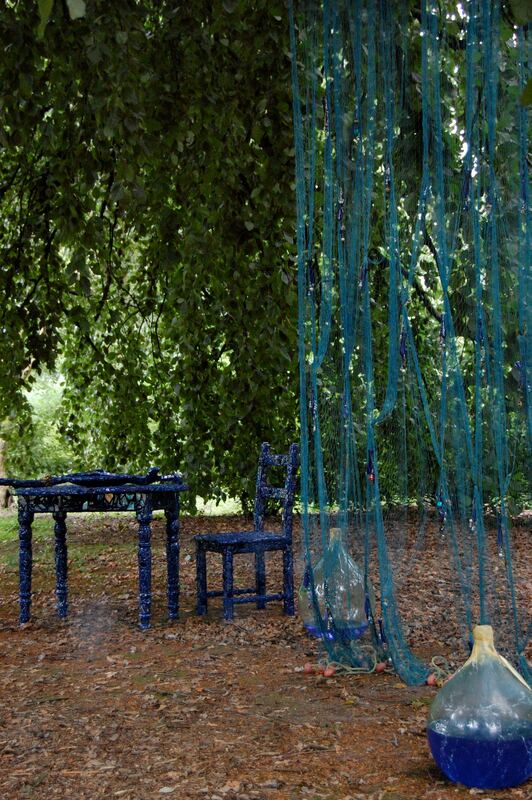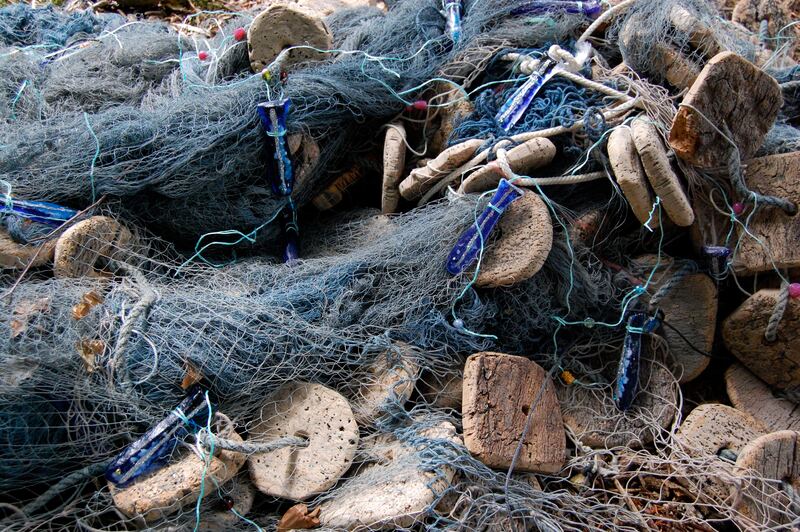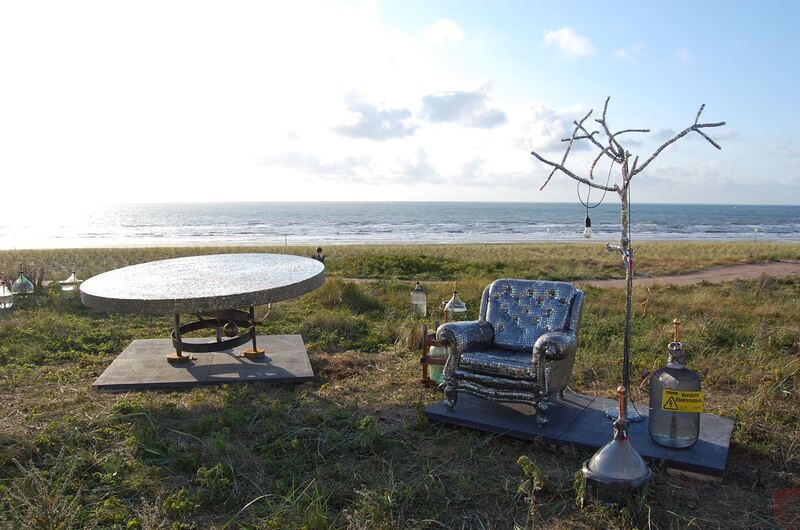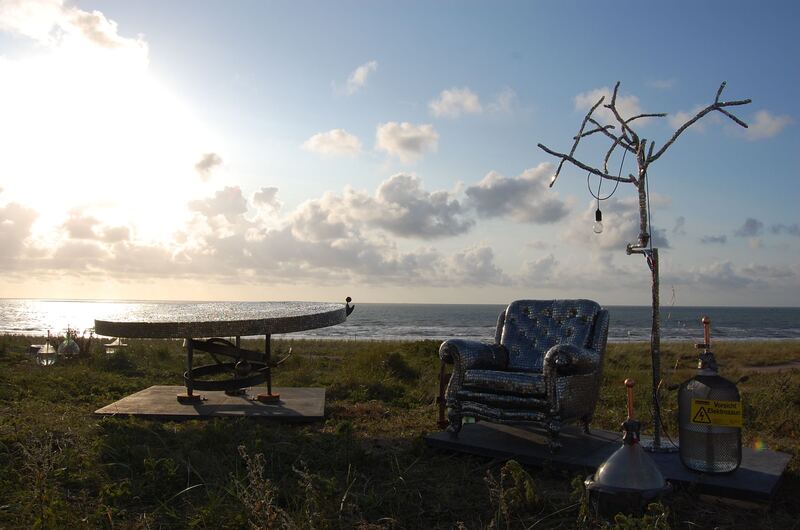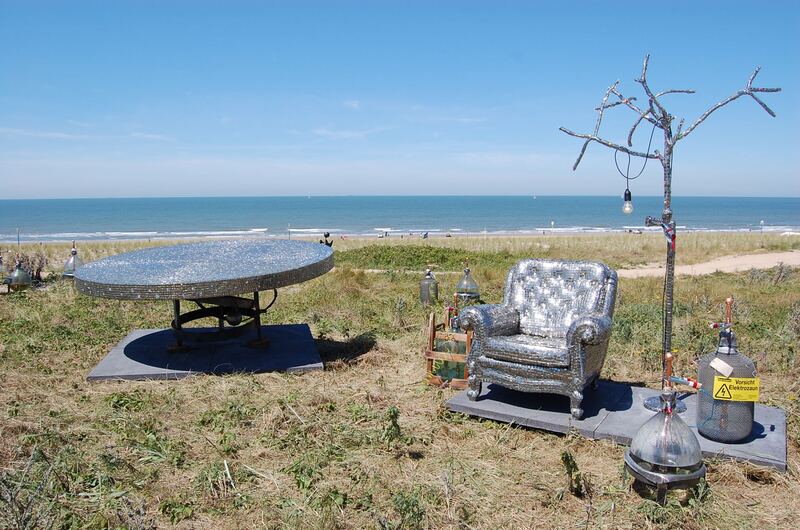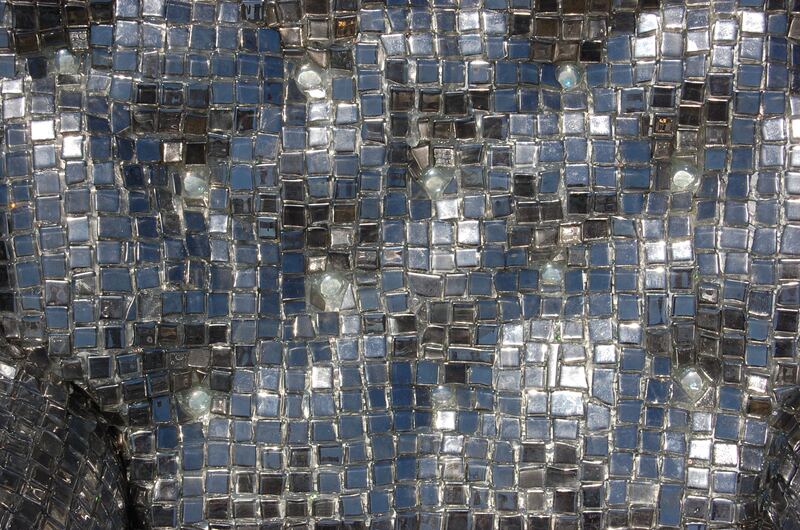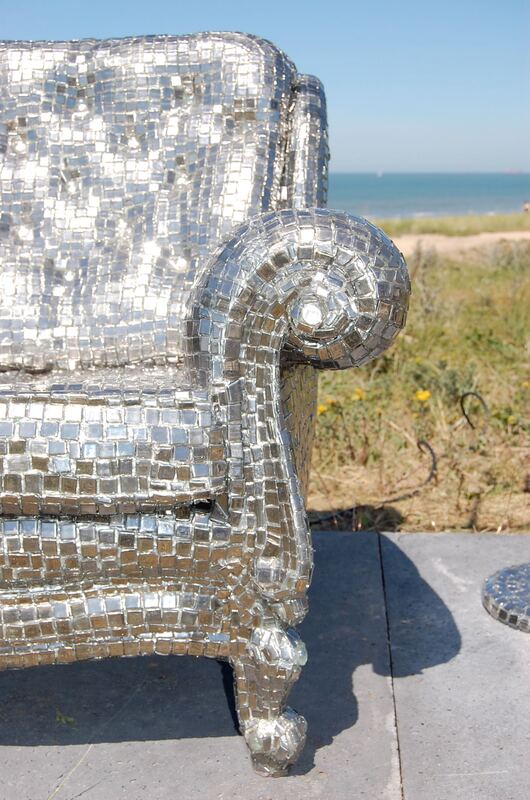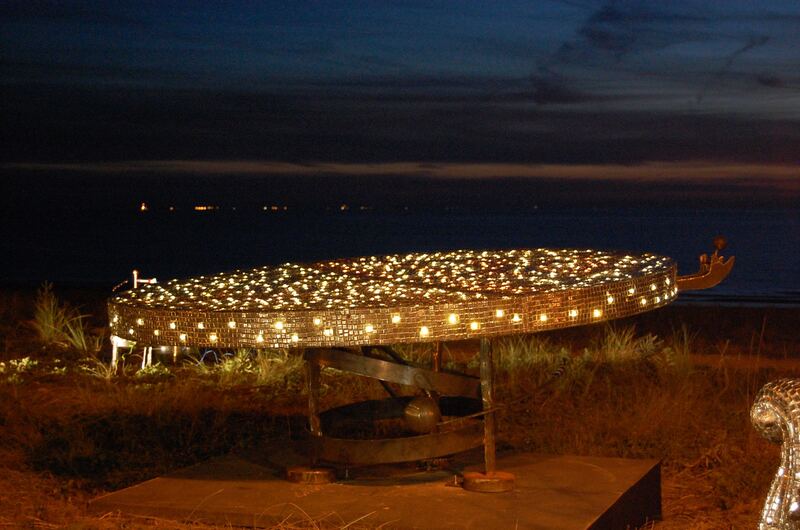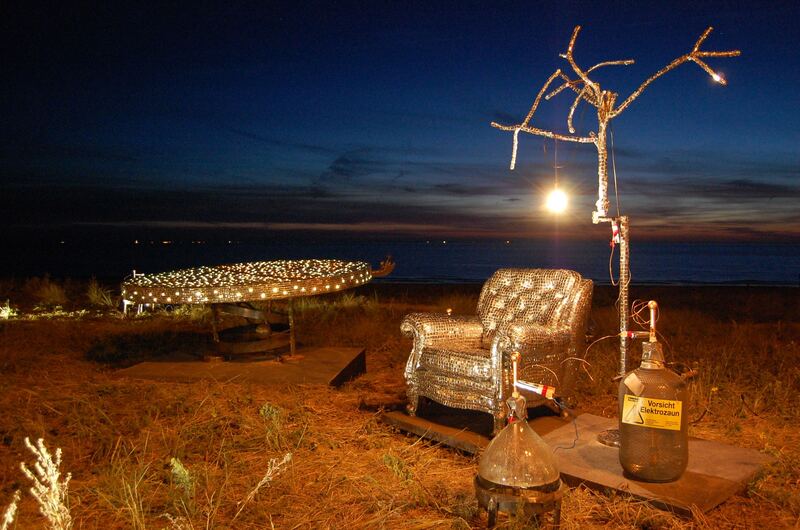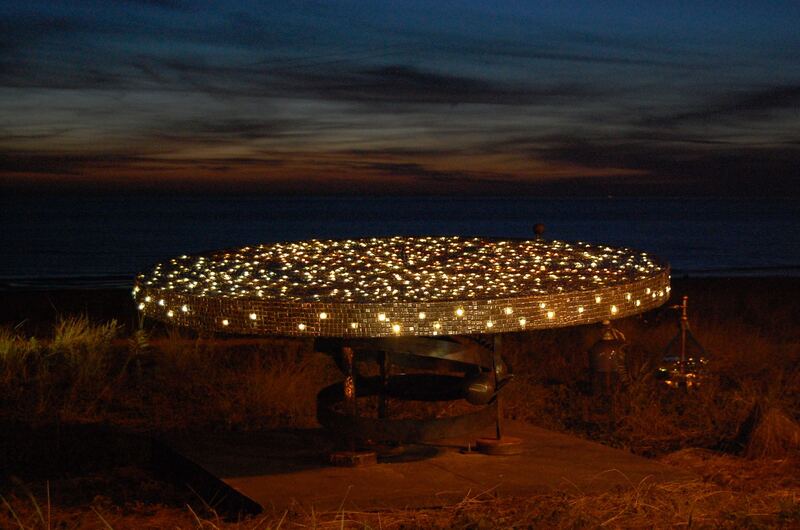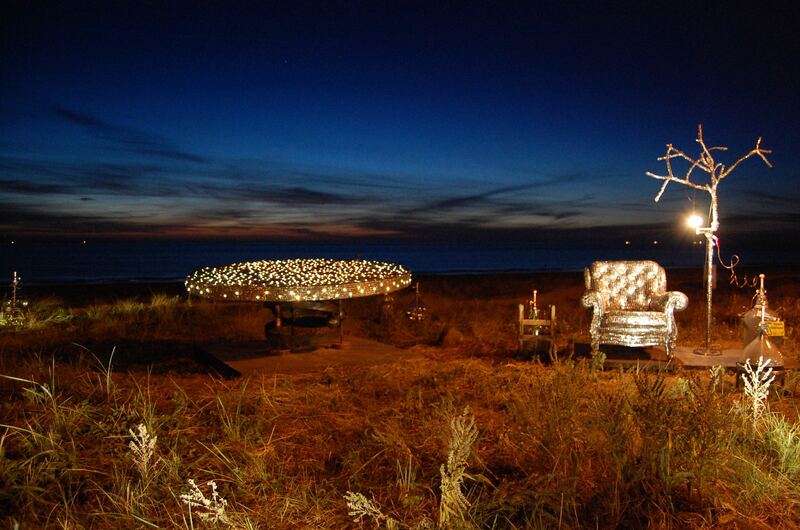Meet Sunny
|
My love for vintage and the jazz era started when I was very young. I played the saxophone since I was 12 and soon discovered big band and swing in the style of the 30's an 40's. I have been playing in a big band since I was 18. I had the best teacher and conductor one can dream of, the trumpet player Charles Green.
After graduating from the art academy I worked as an individual artist for almost 20 years. I had my own studio where I made big installation pieces. My main material was glass, since my father and grandfather both have a glass studio. I was quite successful, things were looking bright. Until in 2014 I had an accident and I fell on my hand. I had surgery but it ook a long time to recover. I was bored and got working with my sewing machine again. I enjoyed making the dresses I alway dreamt of, learned how to draft a pattern, read books and watched video's to learn tailoring techniques. I started making outfits for some members of the small big band I played in, and then some dansers. I could live in my world with jazz, vintage style clothing and my band. Since 2015 my life got turned upside down many times. I struggled through divorce and rebuilding my studio, I lost my dear mum who was also my best tutor, I had a tumor and had major surgery and it was a 50/50 change to survive, but I did. At the hardest times I was lucky to be able to focus on my work. It gives me a reason and a purpose and no matter the adversity, I try to see what possibilities I do have. |
My study and carrier
Study
Between 1990 and 1994, I studied at the Academy for Visual Education in Tilburg. It was a broad study with graduation subjects including costume and set design, of course, but also graphic design, photography, drawing and art and theatrical history. We were mainly trained to look closely, to develop a feeling (fingerspitzengefühl) for design, drama and style, and to focus more on content and less on practical implementation. The disadvantage of this is that in whatever you want to do, you have to work to find out how, but the advantage is that there is a broad basis. In the end, it is not so much what you do but how you do it. Without content, it is an empty shell. Another advantage is that I learned to look, and to apply that to photography and graphic design, for example. In 1995-1996, I did a Masters in Utrecht and in Prague. They were mainly useful for my personal development, but I did notice that I had already learned a lot in Tilburg.
Between 1990 and 1994, I studied at the Academy for Visual Education in Tilburg. It was a broad study with graduation subjects including costume and set design, of course, but also graphic design, photography, drawing and art and theatrical history. We were mainly trained to look closely, to develop a feeling (fingerspitzengefühl) for design, drama and style, and to focus more on content and less on practical implementation. The disadvantage of this is that in whatever you want to do, you have to work to find out how, but the advantage is that there is a broad basis. In the end, it is not so much what you do but how you do it. Without content, it is an empty shell. Another advantage is that I learned to look, and to apply that to photography and graphic design, for example. In 1995-1996, I did a Masters in Utrecht and in Prague. They were mainly useful for my personal development, but I did notice that I had already learned a lot in Tilburg.
My graduation work, On the left costumes for Das Rheingold - Richard Wagner, on the right for L'Orfeo - Claudio Monteverdi. Click pictures for more info
Life as a glass artist
It may sound strange, and it was perhaps a completely different life. But it does make sense. My grandfather; André van der Burght, was a monumental designer. He sudied at the Academy of Fine Arts in The Hague (NL) and learned from masters like Willem van Konijnenburg , Thorn Prikker and Theo van Doesburg. After WWII he worked as head of advertising vor DAF automobiles in EIndhoven (NL) My mother (Angela van der Burght) grew up in EIndhoven and went to the Design Academy there to study textile design. That is where she met my father. It was 1968 so very likely they spend more time with the student revolt than actual study. After their studies they were seeking a house with atelier and moved to Belgium. My mother worked as a independent pattern designer for the textile industry, worked voor De Ploeg textiles where she improved the weaving system based on 24 colours instead of the 1000 colours they used before. Later she was a teacher at the Textile department at the academy of fine arts in Tilburg (NL) Meanwhile my father Jan-Willem van Zijst worked in stand construction for big fairs all over the world. I was born in 1973, in a big old house in a rural area. After I was born, my father studied stained glass in Hasselt (Belgium) and founded Fenestra Ateliers. He executed my grandfathers designs, in traditional stained glass often commissioned by churches or public buildings. Later, somewhere in the 1980s my mother and father worked together on their own pieces as independent artists, painting with light. They took the stained glass window out of the hole in the wall and made free standing sculptures.
So, I grew up in a glass family, with a tough Textile professor as a mum. No wonder I wanted to study scenography, something completely different, turns out it wasn't very different. Monumental design, making pieces that are strong enough in their design to withstand the visual chaos that surrounds us, is universal. Weather it's a glass vessel, a table or jewellery or clothing. The design principles are exactly the same. Form, material, construction, it all tells a story. In any field of design it is important to be ruthless when judging your own work. Is it really as strong as it can be? Is it made as well as can be? Skip the 'fun' ideas and throw them in the bin. Go back to the bare essential, always look at the back or inside, every process on the front has a result on the back as well. These lessons are burnt into my DNA and applicable to any form of design. I worked as an independent artist/designer after I finished my studies for almost 20 years. I had a son, I tried to combine being a mum and an artist which wasn't always easy. Then in 20015 I had a stupid accident and fell on my hand. They couldn't find what was wrong and it took more than a year before I had surgery, then again almost a year to recover. I wasn't able to work with big heavy pieces anymore, and started sewing. I learned to draft patterns, I watched DVDs and read books, I loved working with textile so much I wanted to do only that. Also it was the perfect way to blend my love for music, love for vintage, and my work. Like pieces of a puzzle.
So, I grew up in a glass family, with a tough Textile professor as a mum. No wonder I wanted to study scenography, something completely different, turns out it wasn't very different. Monumental design, making pieces that are strong enough in their design to withstand the visual chaos that surrounds us, is universal. Weather it's a glass vessel, a table or jewellery or clothing. The design principles are exactly the same. Form, material, construction, it all tells a story. In any field of design it is important to be ruthless when judging your own work. Is it really as strong as it can be? Is it made as well as can be? Skip the 'fun' ideas and throw them in the bin. Go back to the bare essential, always look at the back or inside, every process on the front has a result on the back as well. These lessons are burnt into my DNA and applicable to any form of design. I worked as an independent artist/designer after I finished my studies for almost 20 years. I had a son, I tried to combine being a mum and an artist which wasn't always easy. Then in 20015 I had a stupid accident and fell on my hand. They couldn't find what was wrong and it took more than a year before I had surgery, then again almost a year to recover. I wasn't able to work with big heavy pieces anymore, and started sewing. I learned to draft patterns, I watched DVDs and read books, I loved working with textile so much I wanted to do only that. Also it was the perfect way to blend my love for music, love for vintage, and my work. Like pieces of a puzzle.
Magnum Opus
Series of installations 'Magnum Opus' made between 2007 - 20013 click images for more detailed info
Magnum Opus is a series of installations about the stages in alchemy, and the age old search for the elixer of life. All of them are set up in way that the spectator can be in the space with the objects. If possible I use music as well. The only thing not present is the character, but it almost feels like they could step in any moment.
The drama of things
The drama of things • text by Mireille Houtzager,1998 Translation: James Benn
Sunny van Zijst's work is imbued with a feeling for the drama of things; it reflects the theatricality of materials, the absurdity of contrasts, the dramatic quality of the dialogue between different things, both between the materials themselves and between an object and the person looking at it. It demonstrates that training in a given field never belies itself.
Sunny van Zijst trained as a theatrical designer at the Fontys Academie voor Beeldende Vorming in Tilburg. Her development as a pictorial artist clearly shows that - fortunately- theatre, in itself, has nothing to do with stage sets or actors in costume, contrary to what is generally regarded as its sole end result.
In fact, true theatre - real drama- is played out in the depiction of the interaction between things and people. It does not require a stage, actors, an auditorium, a playwright or a director; these are, at best, devices used in order to present the drama, whether or not they are capable of putting across its meaning and message. We are left to wait and see whether the whole thing manages to sparkle and crackle with any degree of animation; often, we find ourselves waiting interminably for the drama to come to life, so that it comes as a relief to be able to slope off in the interval, or to switch over to a different channel or just turn the whole thing off.
It is clear from Sunny van Zijst's work that she has fully grasped not only the message to be conveyed but also the medium used to put it across and the difference between appearance and substance. She knows how to transform her narratives, her stories and her messages into matter which is charged with tension and suspense, matter infused with imagination and form. Her works form what may be described as crystallized, materialized dialogues. The drama is frozen; the motion is rendered immobile and the action inert; the emotion is condensed, sealed in and thus concentrated and intensified. This infuses her objects and installations with a magical quality, giving them a mysterious force which may be said to represent the essential substance of theatre in its original, archetypal form. Theatre is not a matter of plot or action - the plot only serves as a vehicle for the drama, amounting to no more than a mere spectacle. Theatre involves myth, mystery, ritual, religion, incident and enchantment. If those elements are present, anything can and may happen: we will fervently believe in each and every absurd unreality. We will find that our imagination is stimulated, that we can move mountains, go crazy, grow wings and fly off to the most remote, far-flung places, discovering the deepest depths in the darkest of darknesses.
Such enchantment, such drama is ultimately to be found not in a played-out story or in written dialogue, or indeed in a succession of scenes and acts; such things constitute merely the aftermath or epilogue. The desire to trace things back to their roots and origins, to rediscover the source from which they first sprang into existence - this is what characterizes the distinctive choice made by this artist: her aim is not to continue recounting the story, or to retell it each time in a slightly different way, but precisely the opposite: by reading the story backwards, she seeks to arrive at the basic cause or reason underlying it.
This represents quite a quest - and one which, given her relative youth, has only just begun. It is a quest the outcome of which, happily, will not be known to us for a long time yet - assuming we want to know it - but one which stirs our curiosity and has the potential to recreate the magic and enchantment which is the sine qua non of art.
Fortunately, following the devastating confrontation between western art and art from the so-called third world (‘Les Magiciens de la Terre’, Paris 1989), it is not only the museums and large galleries which, realizing that a mistake of some sort has been made, have started to make a large-scale ‘catching-up’ effort; in addition, artists themselves have understood and taken this message on board during the course of the 1990s.
If there is something which we in the western, modern world have lost along the way, that something is our sense of magic - our feeling, or rather our instinct, for the magic of things. And if there is something which - ever more painfully - we find to be missing from our lives, that something is magic. Whilst I do not wish, in a sociologically correct way, to embark on any trend analysis, or to exorcise the spirit of our times, it is clear that the writing on the wall of the cushioned, insulated habitat in which we have spent the present decade speaks volumes.
The whole fin-de-siècle atmosphere in which we find ourselves rummaging around, complete with New Age sounds and vague, religious, quasi-sectarian writings, accompanied by their attendant attributes, expresses -generally, to a chorus of shrill incomprehension- something of that desire, that nostalgia. We keep on looking, searching far from home, far from our culture, in the hope that a little rabbit's tail, with a child's tooth on a piece of string, will be enough to exorcise the evil spirits, and arm us against the perils of the third millennium after Christ. We forget that, close to home, just around the corner, our own culture is to be found, a culture offering the active, unfathomable springs of myth and magic. Those springs have been debased and polluted into loose forms, accepted and superficial codes and quotations, which the post-modernism characterising the final quarter of the twentieth century has willingly turned into a playground.
Those artists - and this is something which can only be done by artists - who have the courage to trace things back to their roots, to filter out the pollution, to decipher the accepted codes back to their origins and causes, may prove to be the new avant-garde, leading the way into the new millennium. Provided she does not allow herself to be taken in or soothed gently into sleep, Sunny van Zijst could be amongst their number. Keep on your guard and arm yourself!
Sunny van Zijst's work is imbued with a feeling for the drama of things; it reflects the theatricality of materials, the absurdity of contrasts, the dramatic quality of the dialogue between different things, both between the materials themselves and between an object and the person looking at it. It demonstrates that training in a given field never belies itself.
Sunny van Zijst trained as a theatrical designer at the Fontys Academie voor Beeldende Vorming in Tilburg. Her development as a pictorial artist clearly shows that - fortunately- theatre, in itself, has nothing to do with stage sets or actors in costume, contrary to what is generally regarded as its sole end result.
In fact, true theatre - real drama- is played out in the depiction of the interaction between things and people. It does not require a stage, actors, an auditorium, a playwright or a director; these are, at best, devices used in order to present the drama, whether or not they are capable of putting across its meaning and message. We are left to wait and see whether the whole thing manages to sparkle and crackle with any degree of animation; often, we find ourselves waiting interminably for the drama to come to life, so that it comes as a relief to be able to slope off in the interval, or to switch over to a different channel or just turn the whole thing off.
It is clear from Sunny van Zijst's work that she has fully grasped not only the message to be conveyed but also the medium used to put it across and the difference between appearance and substance. She knows how to transform her narratives, her stories and her messages into matter which is charged with tension and suspense, matter infused with imagination and form. Her works form what may be described as crystallized, materialized dialogues. The drama is frozen; the motion is rendered immobile and the action inert; the emotion is condensed, sealed in and thus concentrated and intensified. This infuses her objects and installations with a magical quality, giving them a mysterious force which may be said to represent the essential substance of theatre in its original, archetypal form. Theatre is not a matter of plot or action - the plot only serves as a vehicle for the drama, amounting to no more than a mere spectacle. Theatre involves myth, mystery, ritual, religion, incident and enchantment. If those elements are present, anything can and may happen: we will fervently believe in each and every absurd unreality. We will find that our imagination is stimulated, that we can move mountains, go crazy, grow wings and fly off to the most remote, far-flung places, discovering the deepest depths in the darkest of darknesses.
Such enchantment, such drama is ultimately to be found not in a played-out story or in written dialogue, or indeed in a succession of scenes and acts; such things constitute merely the aftermath or epilogue. The desire to trace things back to their roots and origins, to rediscover the source from which they first sprang into existence - this is what characterizes the distinctive choice made by this artist: her aim is not to continue recounting the story, or to retell it each time in a slightly different way, but precisely the opposite: by reading the story backwards, she seeks to arrive at the basic cause or reason underlying it.
This represents quite a quest - and one which, given her relative youth, has only just begun. It is a quest the outcome of which, happily, will not be known to us for a long time yet - assuming we want to know it - but one which stirs our curiosity and has the potential to recreate the magic and enchantment which is the sine qua non of art.
Fortunately, following the devastating confrontation between western art and art from the so-called third world (‘Les Magiciens de la Terre’, Paris 1989), it is not only the museums and large galleries which, realizing that a mistake of some sort has been made, have started to make a large-scale ‘catching-up’ effort; in addition, artists themselves have understood and taken this message on board during the course of the 1990s.
If there is something which we in the western, modern world have lost along the way, that something is our sense of magic - our feeling, or rather our instinct, for the magic of things. And if there is something which - ever more painfully - we find to be missing from our lives, that something is magic. Whilst I do not wish, in a sociologically correct way, to embark on any trend analysis, or to exorcise the spirit of our times, it is clear that the writing on the wall of the cushioned, insulated habitat in which we have spent the present decade speaks volumes.
The whole fin-de-siècle atmosphere in which we find ourselves rummaging around, complete with New Age sounds and vague, religious, quasi-sectarian writings, accompanied by their attendant attributes, expresses -generally, to a chorus of shrill incomprehension- something of that desire, that nostalgia. We keep on looking, searching far from home, far from our culture, in the hope that a little rabbit's tail, with a child's tooth on a piece of string, will be enough to exorcise the evil spirits, and arm us against the perils of the third millennium after Christ. We forget that, close to home, just around the corner, our own culture is to be found, a culture offering the active, unfathomable springs of myth and magic. Those springs have been debased and polluted into loose forms, accepted and superficial codes and quotations, which the post-modernism characterising the final quarter of the twentieth century has willingly turned into a playground.
Those artists - and this is something which can only be done by artists - who have the courage to trace things back to their roots, to filter out the pollution, to decipher the accepted codes back to their origins and causes, may prove to be the new avant-garde, leading the way into the new millennium. Provided she does not allow herself to be taken in or soothed gently into sleep, Sunny van Zijst could be amongst their number. Keep on your guard and arm yourself!
Music
Has always been a big part of my life. And mostly thanks to my dad. He played trumpet, and I grew up with so many styles of music. From Miles Davis, Cannonball Adderley, through Blood Sweat and Tears and Frank Zappa. I had piano lessons, later stole my dads trumpet and was stimulated to play saxophone (Still not sure if it was because of the trumpet, it must have been hell for my parents, haha!) I remember one moment very well. I think I was 11 or 12, and I was ill. My dad gave me two tapes with Count Basie, Duke Ellington and one with various Big Band tunes from the 40s. I was so taken by that typical sound. The way the way the saxophone section sounded, the swing, and also the way it was arranged. The tunes by Glen Miller and the Modernaires, I absolutely loved it! And still do.
So obvioulsy, when Charli Green asked me to join the Studentproof Big Band in Eindhoven I said yes. I played baritone saxophone at that time. Loved the low pitched honking. We were a student band, but nobody left. The trumpet section often stayed at rehearsal till 4 in the morning, almost all the members were so focussed. It was a very good band at that time! We played at bigger festivals, we had a trip to Italy where we had a lot of fun, drank a lot and killed it on stage. This is a recording from Bologna. WE had been playing for a few days in a row, people went into town, did a jam session in the afternoon, and nobody went to the hotel to change. We didn't expect a big stage and TV camera's, so half the band was in shorts. That was a bit awkward to say the least.. So we had to be killing with the music, and I still think it was one of our best concerts.
We recorded two CDs with Studentproof. And they are actually pretty good. For a bunch of turkeys.
Lindy Hop
Later I joined a so called small big band. We played a lot for Lindy hop dancing that is basically a swing dance form the 1930s and 40s. The dance is, like the music, a lot of improvisation and very energetic. I really loved playing for the dancers.
